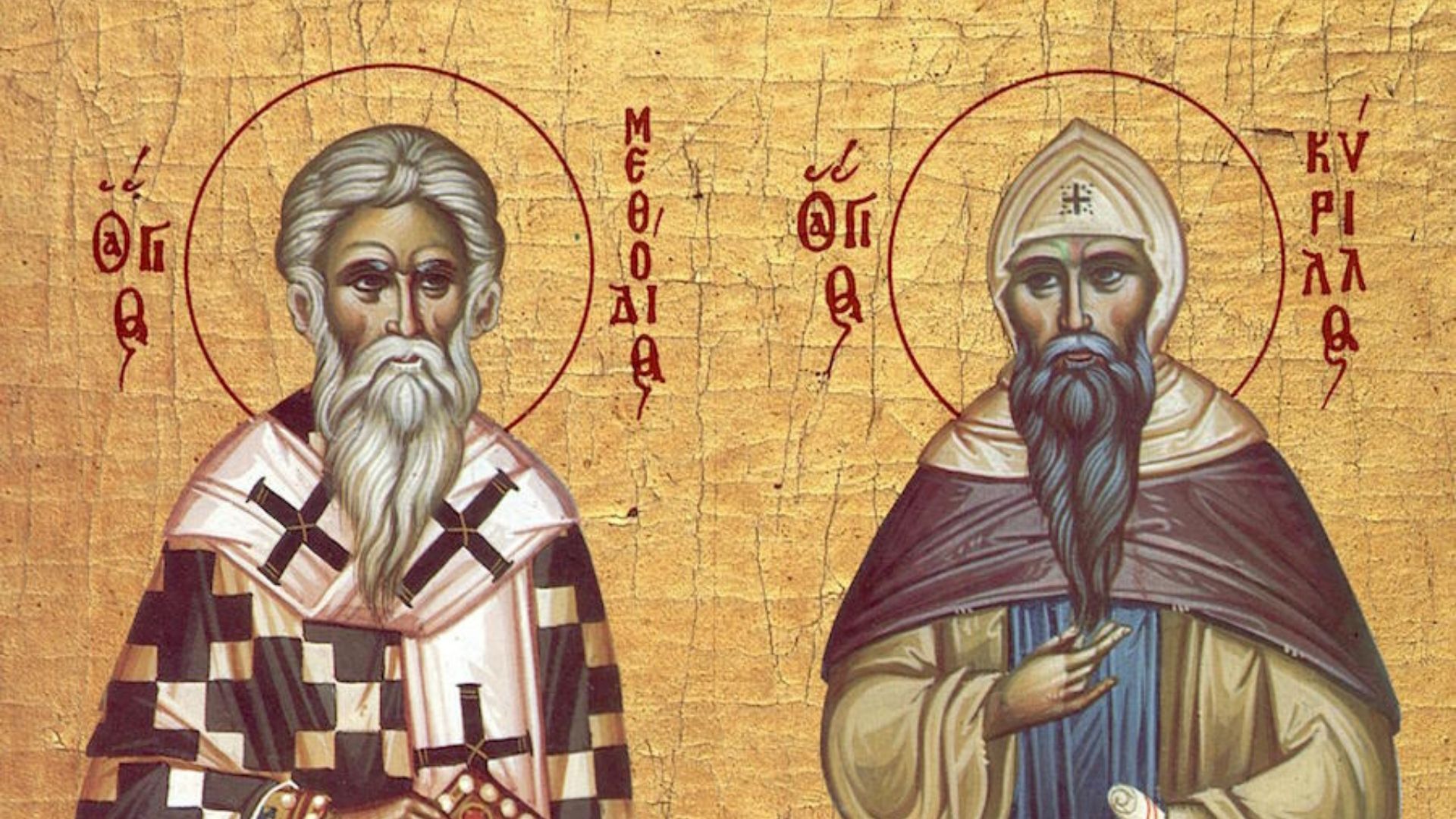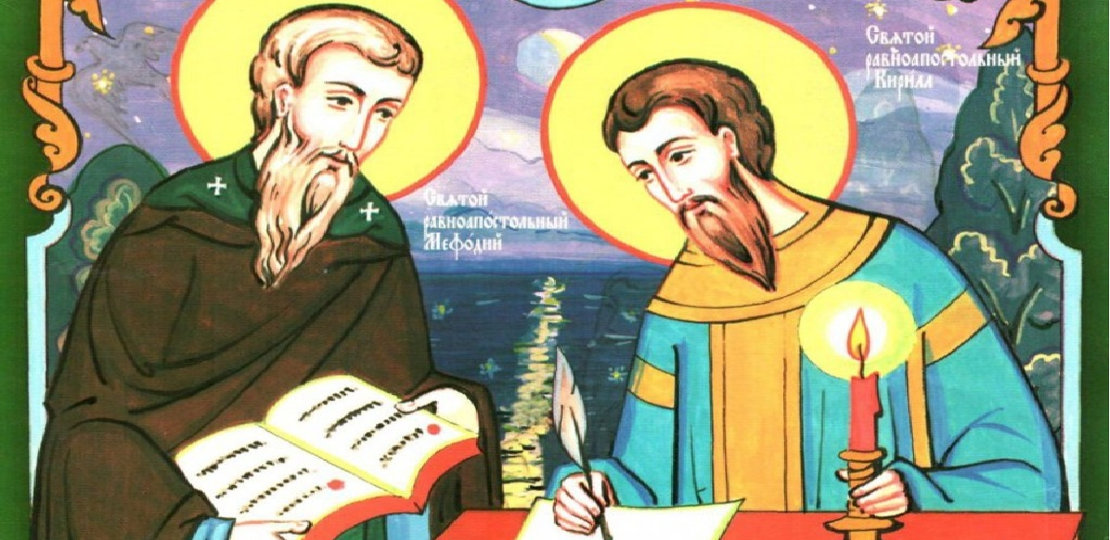Cyril and Methodius are among the very first preachers of the Christian faith. The brothers come from the Greek city of Thessaloniki (today Thessaloniki) are known not only as Slavic educators, but also the creators of the Slavic alphabet.
In 863, they stayed in Byzantium, from where they were invited by Prince Rostislav to the Great Moravian Empire (known as the Bohemian Principality, located in Central Europe). Where they were able to achieve complete independence of the Slavic Church from the German episcopate. The Old Slavonic language began to be used for worship in most churches. Important books for services have been translated from Greek by the enlighteners.
The Greek alphabet consisted of 24 letters. The brothers took it as the basis for the formation of Old Slavonic. Cyril and Methodius supplemented it with hissing sounds (h, sch, w, w), which were characteristic in the Slavic languages. To this day, the Russian language has preserved most of the letters. However, such as «izhitsa», «yat» and «yus» are no longer used.

In IX, the alphabet included 40 letters and was called «Glagolitic». It spread widely on the territory of states such as Moravia and Bulgaria in the X-XI centuries. And in Croatia it existed until the 18th century.
Gradually, the Glagolitic alphabet fell out of use by the Russian peoples, as well as the Serbian and Bulgarian. In the second half of the 9th – beginning of the 10th century, the Cyrillic alphabet appeared. This alphabet had a lot in common with the verb. It differed only in simpler writing and the addition of some letters.
The Cyrillic alphabet was widely spread in the territory of the southern, western and eastern Slavs.
In 1708, Peter I carried out a reform and brought the Cyrillic alphabet closer to the Latin alphabet. It is in this form that the Russian alphabet has survived to this day.

